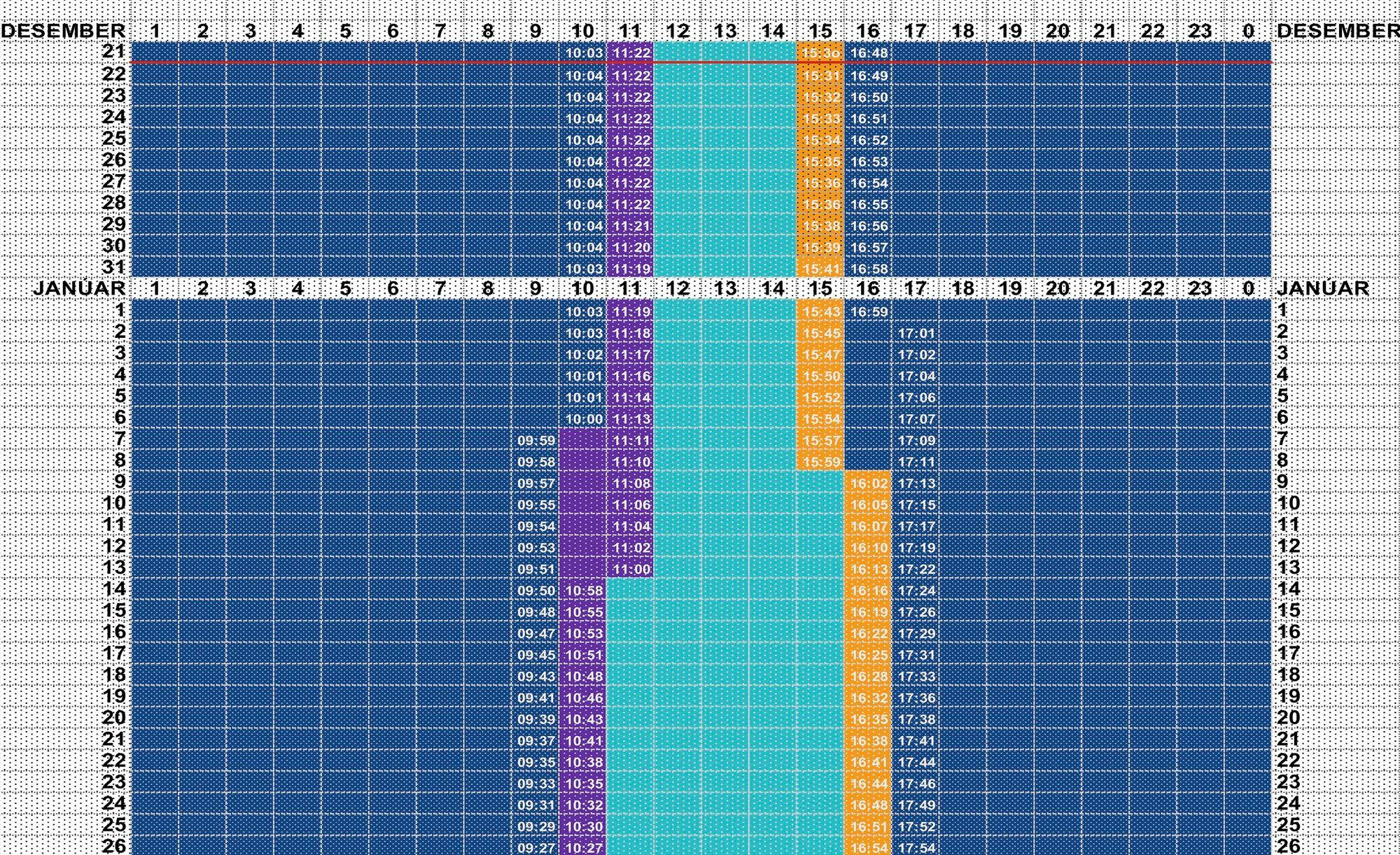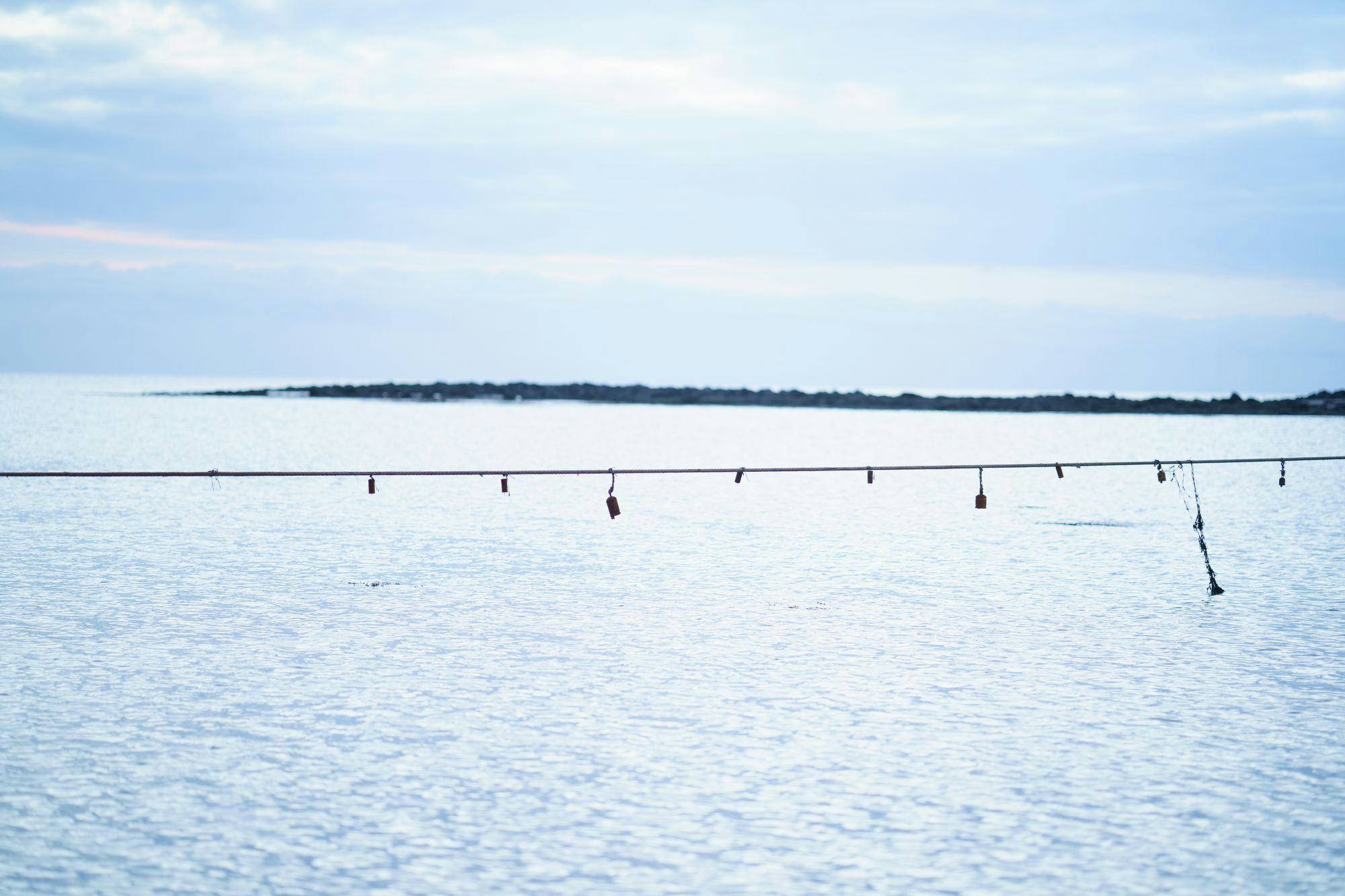Misseri
Sirra Sigrún Sigurðardóttir

The work tries to capture something we are all so familiar with in our daily lives, but it also speaks to our larger context, to our ever-changing position in space where we revolve around an axis in an orbit around the sun.
Misseri is, in essence, an information sign where passers-by can observe the different orbits of the sun depending on the time of year in Reykjavík. It depicts the different brightness levels of the day and the decisive seasonal fluctuations that we experience as the year goes on here by the Arctic Circle. The work is printed on reflective material and thus refers to everyday road signs.
The sign displays the passage of the sun from the opening day of the exhibition when the day is shortest until the bright summer nights at the summer solstice, a period that corresponds with the exhibition duration. The image shows each day of the period, line by line, both with colour codes and numerical information, with the strictness of a spreadsheet. In this way, the changing inclination of the earth's axis becomes graphically visual. The colours represent dawn, daylight, sunset and darkness. The most prominent colours are light blue for bright day and deep blue for the dark of night; in between are orange, purple and pink for the twilight.
Misseri is an old Icelandicword that means six months or half a year. Icelandic settlers created their own calendar of the year based on their heritage of counting time in weeks and their observation of nature. Made in the tenth century by solar cycle observations, this resulted in a calendar called misseristal. The misseri-calendar remained in everyday use in Iceland for secular purposes until the nineteenth century. This old calendar consisted of just two seasons, summer and winter, with summer beginning in April. But in the astronomical calendar, seasons are based on the ecliptic trajectory of the sun. Spring begins with the vernal equinox, summer with the summer solstice, autumn with the fall equinox and winter with the winter solstice.
Sirra Sigrún Sigurðardóttir (1977) completed her BA degree from the Iceland University of the Arts in 2001 and an MA degree from the School of Visual Art in New York in 2013. Sirra’s work is cosmic in nature, often connected to speculations about our position within the inner workings of nature, physics and the forces that drive the world. It often evokes our status as individuals, our value and smallness where the small is placed in context with the larger and the meaning is transferred from one phenomenon to another so that it becomes a new perception, a new vision. She has held solo exhibitions at the Reykjavík Art Museum, the Living Art Museum, the Árnes Art Museum, Hafnarborg and Kling & Bang. She has also taken part in numerous group exhibitions around the world, including China, Finland and England. Sirra has received grants and recognition from the art funds of Svavar Guðnason, Guðmunda Andrésdóttir and the Guðmunda S. Kristinsdóttir Prize. Sirra has been a member of the artist-run space Kling & Bang since its inception in 2003 and is Associate Professor of Fine Art and BA Programme Director at The Iceland University of the Arts.
Artist: Sirra Sigrún Sigurðardóttir


-icelandic-pavilion-2000x2667.jpg&w=2048&q=80)

